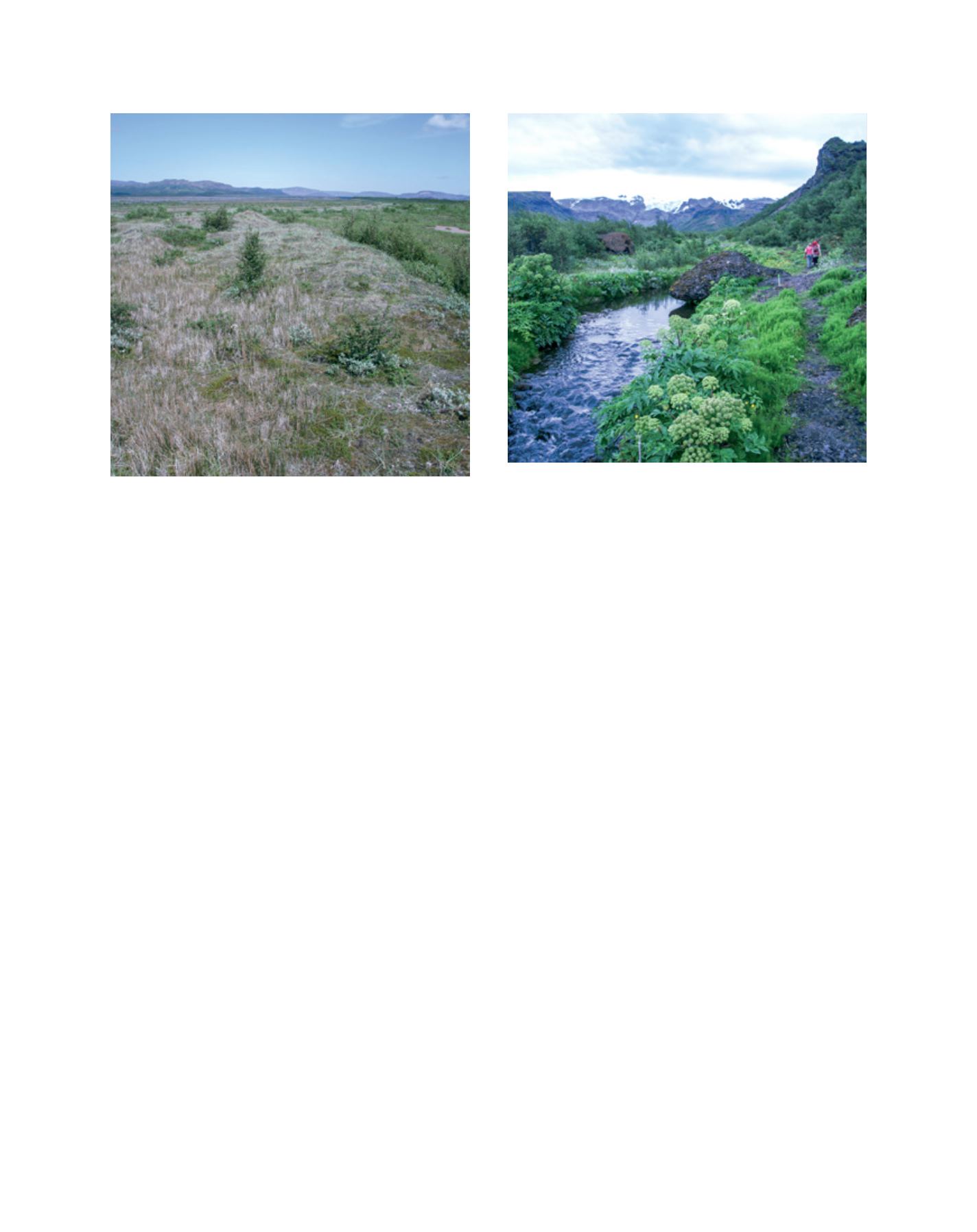

[
] 41
social acknowledgement and local support for the conser-
vation measures implemented, and to secure the long-term
ecological maintenance of treated areas post implementation.
The Icelandic Forest Association (IFA) non-governmental
organizations (NGOs), dedicated to forestation on deforested
areas, were established by 1930. In the following decades,
several regional branches were established under the IFA
umbrella. From its establishment, IFA has provided profound
support to the forestation and woodland protection practised
directly by IFS. In 1969, increased public discussions about
the poor condition of Icelandic ecosystems compared to past
ecological richness led to the establishment of conservation
NGOs; Landvernd. These new NGOs were meant to provide
voluntary support to soil conservation activities comparable to
what IFA, the forest NGOs, provided to forestation projects.
Around 1970, a number of small individual NGO groups that
annually worked on land reclamation on a voluntary basis were
also established. The increased environmental awareness was
also reflected at the governmental level, for example through a
major revision of the laws on soil conservation and through a
parliamentary resolution that substantially increased the public
funds available in the 1980s for ecosystem restoration and for
promoting methods of sustainable land management.
After 1990 the prevailing methodology driving governmen-
tal ecosystem restoration practices was substantially changed.
Instead of the previous top-down approaches, the governmen-
tal agencies responsible for soil conservation and forestation
adopted new participatory strategies for their restoration
measures. Furthermore, instead of continuing to promote the
use of agronomic methods, the agencies increasingly adopted
the ecosystem approach in their restoration activities. Today,
governmentally driven ecosystem restoration projects are
based on strong stakeholder involvement and participatory
approaches throughout the project lifetime and preferably
afterwards as well.
In recent years the diversity of restoration projects has
increased significantly, with a stronger focus on multiple inte-
grated outcomes. Their goals are, for example, related to raising
awareness about how soil conservation and the processes
driving climate change are inevitably interconnected and how
to enhance the socioecological resilience of degraded ecosys-
tems to increase the livelihood of local communities. Currently,
a number of restoration partnership programmes and projects
exist, managed by governmental agencies, NGOs or as independ-
ent projects funded by the state and by businesses. There follows
a short description of the main programmes. A complete summa-
tion of all restoration measures was published in a report titled
‘Ecological Restoration in Iceland’, released in 2011.
Farmers Heal the Land (FHL) is a cost-shared governmental
restoration programme established by SCSI in 1990. It is based
on collaboration between farmers and SCSI. It is the largest
programme of its kind, with around 600 participants working
individually on lowland restoration projects at their own farm-
steads. The programme was established to increase rangeland
restoration and improve grazing management; however, its
main underlying target was to ease cooperation and build
mutual trust between farmers and SCSI, as this had been
perceived by the correspondence as lacking. The programme
provides direct and indirect incentives to participants in the
form of minimum subsidy payments and regular in-person field
visits by restoration experts located at the nearest extension
SCSI office. The FHL programme has facilitated the restora-
tion of approximately 300 km
2
(3 per cent) of degraded areas
below 400 m elevation. Furthermore it has substantially eased
communications and strengthened trust between SCSI and
farmers, as hoped for in the beginning. The majority of the
farmers practise restoration to extend the size of grazing land.
Participants also claim that the restoration of degraded lands
is their moral responsibility; to ‘pay the debt to the land’ and
return it to their descendants in a better condition than it was in
Image: Hreinn Óskarsson
Image: Hreinn Óskarsson
Natural colonization of birch woodlands in the Hekla forest area
Successful restoration of birch woodlands in Goðaland south Iceland. The
remnants of birch woodlands were protected from grazing in 1925 by IFS
L
iving
L
and
















